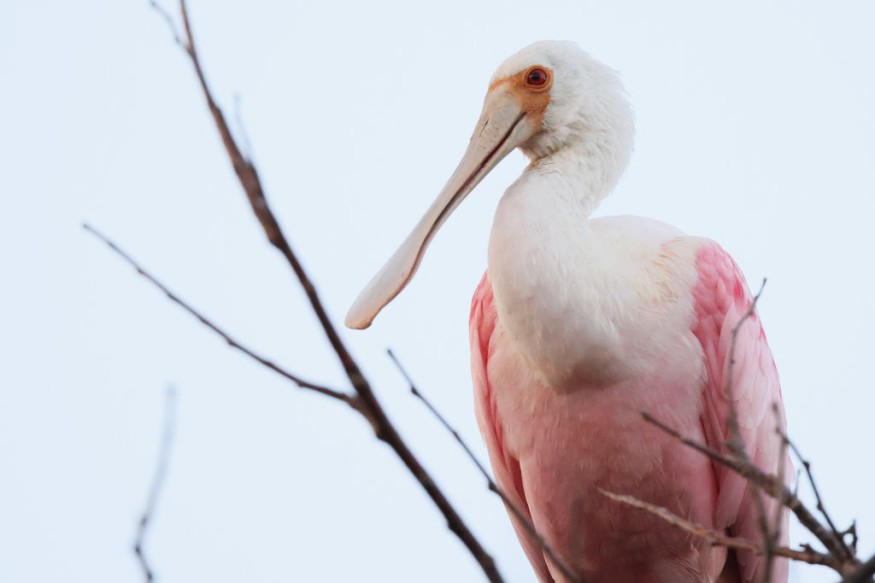
The seashore bird roseate spoonbill sightings were recorded 178 years after the last sighting in Wisconsin, prompting a flock of bird watchers to visit Greenbay.
Roseate Spoonbill in Wisconsin
On July 26, a roseate spoonbill flew into Green Bay, and nearly a week later, it still attracts Wisconsin bird enthusiasts and inquisitive observers.
The bird stands out among the egrets and other shorebirds that inhabit the Cat Island restoration area as well as Ken Euers Nature Area on the northwest side of Green Bay thanks to its pale pink feathers along with its flattened, spoon-shaped bill.
Shorebirds roseate spoonbills swish over either freshwater or saltwater looking for fish or crustaceans to eat. They have a distinctively curved bill.
This bird is one of the six species of spoonbills in the world-and the only one to be found in the Americas, according to All About Birds.
Juveniles typically have pinker, paler plumage that develops into a much more stunning shade of pink as they become older.
It is very unusual to see a roseate spoonbill this far north. The warmer, southern climes around the Gulf of Mexico, such as southeast Florida along with southwest Texas, are where the birds usually spend their time.
The Smithsonian Magazine claimed that they are also typical in some regions of Central and South America.
This is the very first time a live roseate spoonbill was ever seen in Wisconsin, according to Wisconsin birdwatchers.
Observations show that in 1845, or 178 years ago, a dead roseate spoonbill was discovered in Rock County.
Logan Lasee, a bird enthusiast from the Green Bay area, saw a rare roseate spoonbill while volunteering to watch for piping plovers.
He warned others, including fellow bird watcher Tom Prestby and biologist Jade Arneson. Lasee was ecstatic to find his first "mega-rarity" and gained new respect from the birding community.
After momentarily going missing, the spoonbill was eventually discovered in Ken Euers Nature Area, drawing a large number of tourists from diverse places.
Prestby thought it was a remarkable addition to his uncommon bird observations and the 300th species he had ever seen in Brown County.
Back to Green Bay After 178 Years
Although not endangered, the roseate spoonbill seems to be outside of its typical range in Green Bay.
Bird watcher Jim Edlhuber, who lives west of Waukesha, learned of the unusual occurrence and hurried to Green Bay to see it-his 374th bird sighting in the previous 12 years. He characterized the occasion as important for Wisconsin.
Bird watchers underlined that it is unpredictable when the roseate spoonbill would appear in Green Bay and how long it will stay there.
The best times to view it, according to Prestby, are early in the morning and late at night as the sun rises or sets. Bird watching may be more difficult in the middle of the day due to the strong sunshine.
Bird watchers underlined that it is unpredictable when the roseate spoonbill would appear in Green Bay and how long it will stay there.
For better observation, binoculars are advised because the spoonbill frequently hangs out between 100 and 150 yards away.
To help preserve the experience for future birdwatchers, present-day birders, ought to respect the bird's space and refrain from getting too close.
Visitors are requested to stay clear of construction machinery and avoid obstructing walkways as the Ken Euers Nature Area is being restored.
Local experts on bird watching are probably happy to lend newcomers their gear and expertise, USA Today reported.
Related Article : Hawk Dive-Bombs People Hindering Mail Deliveries in Texas
© 2025 NatureWorldNews.com All rights reserved. Do not reproduce without permission.





